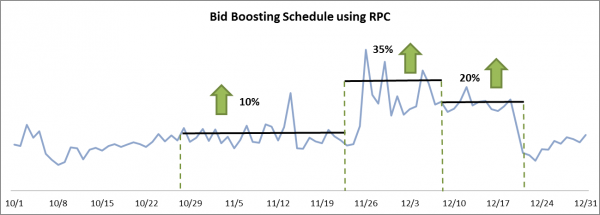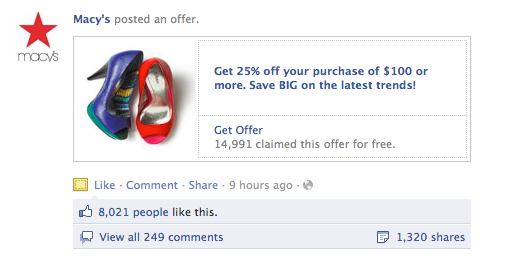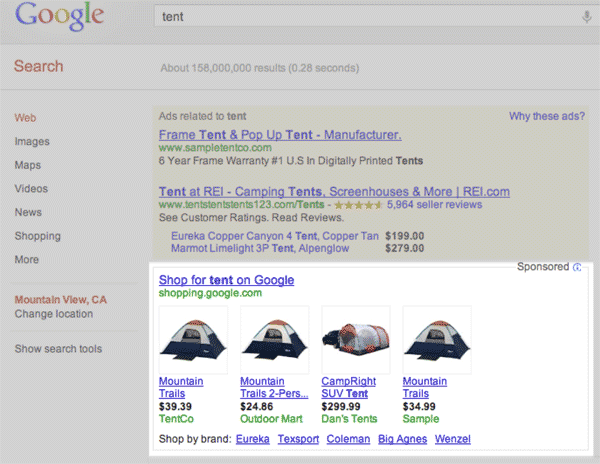5 SEM Tips For A Successful 2012 Holiday Season
The holiday shopping season has always been the most profitable time of the year for online retailers. Search, display, social and mobile have shown tremendous growth year over year and continue to be vital programs for acquiring more revenue during the holidays. Online marketers going into the 2012 holiday season should have a plan for […]
The holiday shopping season has always been the most profitable time of the year for online retailers. Search, display, social and mobile have shown tremendous growth year over year and continue to be vital programs for acquiring more revenue during the holidays. Online marketers going into the 2012 holiday season should have a plan for success, but maintain the ability to stay flexible in the face of changing conditions.
To help prioritize paid search strategies for the upcoming season, we evaluated five best practices across Marin’s client base and highlighted them below:
1. Prepare & Schedule Campaigns
Once the holiday season begins, search marketers are often consumed by data analysis, granular reporting, and continuous campaign optimization based on recent performance. This leaves little time to launch new campaigns with targeted keywords and relevant creative that are carefully tuned to key promotions.
In advance of the holidays, be sure to build campaigns that align with promotional calendars. Leverage proven creative text combined with engaging promotional offers. Aggressively expand to more action oriented keywords (i.e., buy watches online). Finally, avoid manually pushing new campaigns during the holidays and weekends — and ensure a timely launch across all products — by scheduling campaigns to launch automatically.
2. Boost Bids
During the holiday season, shoppers are more likely to purchase and purchase more per transaction. Creating a boost schedule is a smart way to prepare for shifts in purchase behavior. A boost schedule is a road map that helps determine when and by how much to increase (or boost) bids, enabling search marketers to take advantage of high conversion rates and revenue-per-click (RPC) during the holidays.
To develop a boost schedule, first set a baseline for RPC in early October. Then estimate how much bids should be increased by examining how RPC changed throughout the 2011 holiday season. Create and apply a boost schedule using actual 2011 RPC trends. Fine-tune boost estimates by monitoring RPC changes on a daily basis.
Lastly, remember to set your bids back to the October baseline once the ground shipping cut-off date has been reached. Using sample data, we calculated average bid boosts for several time periods during the holiday season.

Figure 1: Developing a Boost Schedule by mapping changes in RPC (Example)
3. Use Promotions
Promoting special offers will be a standard throughout the holiday season. Free shipping, discounts and coupons are among the most influential promotions for shoppers.
To reach value-shoppers, highlight special offers like 25% Off, $10 Coupon or Free Shipping within creative text. Introduce shipping cut-off dates and time-sensitive offers to create a sense of urgency and convert shoppers at a higher frequency.

Figure 2: Closeout, Sale, 75% Off and Free Shipping are all effective promotions to use in holiday creative text
4. Turn To Social Shoppers
With Facebook starting to exhibit search-like holiday seasonality, it becomes crucial that businesses embrace the power of an integrated social marketing program. Shoppers who once turned to search engines for information are increasingly relying on social connections for the latest news, product information, special offers, and brand suggestions.
Ensure that social media initiatives stay focused on measurable, revenue acquiring activities by using techniques like Facebook fan-only specials and coupons. Strengthen relationships and increase the likelihood of a purchase by responding to posts and tweets made by shoppers.
Additionally, combine Facebook Offers with Facebook Sponsored Stories (for targeting friends of fans) to acquire more fans, appeal to deal-seeking social shoppers, and amplify holiday messaging and promotions across a larger, more engaged audience.

Figure 3: Bring shoppers to your business with a Facebook holiday offer they can claim and share with their friends
5. Leverage Product Listing Ads (PLA)
To capitalize on the dramatic increase in shopping-related queries and engage more shoppers during the holiday season, search marketers should consider implementing PLAs. These highly visible and content rich search ads make it easier for Google shoppers to find and compare different products. PLAs include a product image, price, and business name to better engage and inform shoppers.
As a result, many retailers experience significantly higher click-through-rates for PLAs than standard text ads. To get started, set up a product feed through a Google Merchant Center account and link it into AdWords.
Leverage these and other best practices to help prepare for the upcoming 2012 holiday season. Our final recommendation is for online marketers to record their 2012 holiday results and findings as quickly as possible. Capturing this data sooner rather than later will make the analysis of holiday performance much easier. Furthermore, accurate and insightful reports of holiday campaign performance will become invaluable assets during the planning of the 2013 holiday season.
Opinions expressed in this article are those of the guest author and not necessarily Search Engine Land. Staff authors are listed here.
Related stories
New on Search Engine Land
